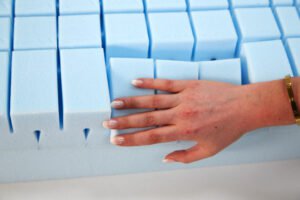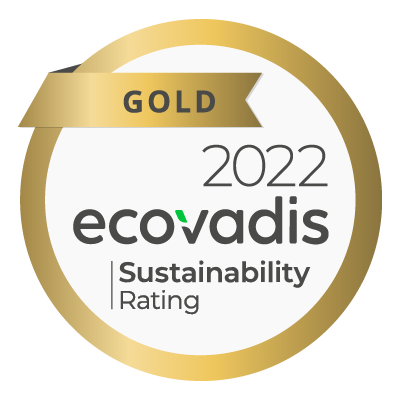Contact Our Technical Team
Do you have any questions?

Pressure ulcers have been part of illness for thousands of years and are not reducing in number. Pressure ulcers occur mainly on bony prominences and prevention relies on the carers repositioning the patient/resident every two hours. This may disturb sleep, cause pain and is ritualistic practice. Nevertheless, the carers feel compelled to follow this regime as they are afraid that if they do not there will be litigation and they are expected to prevent avoidable pressure ulcers.
The Department of Health (DH) has been extremely helpful in providing an answer to ‘what is an avoidable pressure ulcer’. They researched the availability of definitions, finding that there are a limited number of definitions in existence to draw from. They quote the Wound, Ostomy and Continence Nurses Society of the US position paper, which points to a clear definition of ‘avoidable and ‘unavoidable’ pressure ulcer. Therefore, modified definitions from DH are:
“Avoidable” means that the person receiving care developed a pressure ulcer and the provider of care did not do one of the following: evaluate the person’s clinical condition and pressure ulcer risk factors; plan and implement interventions that are consistent with the persons needs and goals, and recognised standards of practice; monitor and evaluate the impact of the interventions; or revise the interventions as appropriate.”
“Unavoidable” means that the person receiving care developed a pressure ulcer even though the provider of the care had evaluated the person’s clinical condition and pressure ulcer risk factors; planned and implemented
interventions that are consistent with the persons needs and goals; and recognised standards of practice; monitored and evaluated the impact of the interventions; and revised the approaches as appropriate; or the individual person refused to adhere to
prevention strategies in spite of education of the consequences of non-adherence”
The Department of Health offers the following Guidance: In determining whether the pressure ulcer is avoidable; commissioners, regulators or others could request to see evidence demonstrating the actions outlined in the “avoidable” definition are
demonstrated.
https://www.patientsafetyfirst.nhs.uk/Content.aspx?path=/interventions/relatedprogrammes/pressure-ulcers/
This retrospective and observational study will review changes that occur in those at risk, or those with established pressure ulcers.
Sarah Gray and Sylvie Hampton have between them, 30 years of wound care knowledge and experience. Sarah is both a Tissue Viability Consultant and a Bladder and Bowel Specialist and worked within the Wound Healing Centre in Eastbourne for 5 years. Now is an Independent Specialist working with Wound Care Consultants. Sylvie was Managing Director of Tissue Viability Consultants for 15 years. In this role, Sylvie undertook research, pressure ulcer prevention strategies and set up a unique and internationally renowned Wound Centre. Now works as an Independent Specialist working with Wound Care Consultants.
Conduct a 1 patient subject evaluation on the VitaCare Airzone Mattress over a 6 month period.
Vita (Holdings) Limited of Oldham Road, Middleton, Manchester M24 2DB Norman Grimshaw formed Vitafoam Limited on £100 of capital at Glen Mill in Oldham, North West England. The company manufactured latex cushions and mattresses. Its first customer was Wrays furniture retailers in Lees, Oldham and the original cheque payment for £39 has been preserved and retained. From these humble beginnings, a multinational company was born. Vita has received five significant industry awards and is a well-known manufacturer producing foam that meets UK flammability regulations and has a footprint across Europe Vita specialises in polyurethane foam for the Italian furniture and bedding industry.
Our VitaCare Airzone mattresses are treated with Ultra-Fresh, the antimicrobial treatment that kills 99.9% of bacteria. Through our innovation, we have been able to add antimicrobial Ultra-Fresh into the foam used for our VitaCare Airzone mattress. We have discovered it provides antibacterial properties throughout the entire mattress.
Ultra-Fresh kills 99.9% of harmful bacteria including MRSA, Staphylococcus aureus and Escherichia coli. To assure our VitaCare Airzone mattress provides the highest anti-bacterial defence the mattress cover is also treated with Ultra-Fresh, offering a comprehensive and consistent line of defence.
VitaCare Airzone (figs 1 and 2) is designed to redistribute interface and sheer pressure and to increase immersion into the mattress thereby, redistributing pressure. VitaCare Airzone also has superior temperature regulation through a system of integrated airflow channels which works with the patient’s movements to allow warm air to be expelled and fresh air drawn in. Body mapping suggests heat dissipation is up to 1.6 times quicker than the standard castellated mattresses in reducing overheating. Therefore VitaCare Airzone mattress will be comfortable and supportive, reduce pressure and shear, has a microclimate to ensure skin protection against moisture


Figure 1 Figure 2
Residents at risk of pressure injury have been evaluated by specialist nurses. The NICE Guidelines Preventing Pressure Ulcers in Adults. NICE Pathway last updated: 19 May 2021. https://pathways.nice.org.uk/pathways/pressure-ulcers advise to use a high-specification foam mattress for adults who are admitted to secondary care and assessed as being at high risk of developing a pressure ulcer in primary and community care settings. The NICE Guidelines indicates that the foam mattress in this evaluation was right for a high-risk patient.
The evaluation of a patient with no pressure injuries. Mrs X is a 62-year-old lady who had been involved in a road traffic accident in April 2006. She sustained a spinal injury in this accident resulting in left-sided paraplegia and is now a permanent Wheelchair user and she is totally reliant on full care. Mrs X is Mrs X was very morbidly obese, over 30 stone in weight and, although people often think that someone overweight is not as high risk as a thin person, this is not true. Her Waterlow Score was 25 which placed her at very high risk of pressure injury.
All the nurses and the carers were happy with the mattress. They were able to care for Mrs X without any issues associated with the mattress. It did not bottom out when the bed was profiled as some mattresses can do. It was simple to clean, the cover did not wrinkle and they were content that their resident was comfortable and happy with the mattress.
This lady is so obese that she should have been nursed on a bariatric bed and bariatric mattress but it appears that the home has no intention of supplying such so she does not fit the bed. This places her at a very high risk of pressure damage.
Mrs X felt cool on the mattress, not ‘sweaty’ as she did on the previous mattress and, as stated previously, she said she loved how comfortable it is and would hate to lose it. There is little more to say about Mrs X’s time on the mattress other than she is very happy with the evaluation and delighted that she can keep the mattress.
After 6 months, she is realising that she is on an inappropriate size mattress for her weight. This is unlikely to change and it does mean that the mattress has undergone a very high-risk evaluation.
There were no skin changes to document or photograph during the first months. Some pictures were taken by the care home but, due to Covid 19 and difficulty with TVNZ accessing the home, these were not of good quality and it is our intention to replace these with good quality photos of Mrs X’s bony prominences. However, due to her very large size and her immobility, gaining photographs have proven difficult.
The sacral area post 6 months was completely clear of any redness. Mrs X does spend 12 hours per day in her wheelchair and there is a marked redness under the buttocks from seating . The advice was provided to her and the home on ensuring the Wheelchair services revaluated her chair cushion. Unfortunately, that area would not be helped with any mattress as it would not connect with any surface when laying supine.
Supine is the only position she can permanently be in when in bed.
The Tissue Viability Nurses did not actually nurse the lady on her mattress so are only able to provide a subjective opinion.
The mattress cover was good quality and still unmarked after 6 months. We could see that she did not sink into the ‘well’ when the bed was profiled. This is a common problem with some mattresses and patients can ‘bottom out’ if this were to occur. It was completely free of bottoming out after 6 months.
There was a slight problem that her weight caused a dip on the sides where she came out of the bed onto her chair but the weight was far too great for a standard mattress. Nevertheless, standard mattress or not, there was no pressure injury caused by the mattress. The fact that there was a pressure injury from the chair does indicate her vulnerability and does underline the benefit of the mattress.
The way forward now is to remove that mattress and check for contamination and wear. An excellent opportunity given the weight that had been on it 8 hours per night for 6 months. Overall TVCN opinion is that this is an excellent and very good quality mattress that offers both pressure reduction and comfort
How can we help you
Do you have any questions?
Vita celebrates its recent awards across a range of markets







If you choose to create an account on the ATS, please refer to the separate Privacy Notice and Terms and Conditions when you register. We are not responsible for the protection and privacy of any information which you provide whilst visiting other sites which are not governed by our Privacy and Cookie Policy.
If you wish to proceed to the third party website please click ‘continue’ otherwise please click 'cancel' to return to Vita’s website.